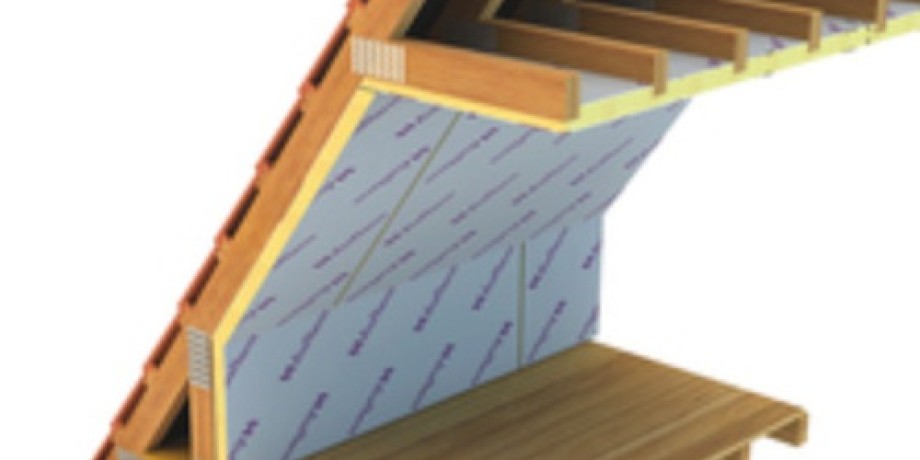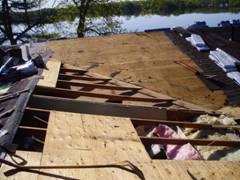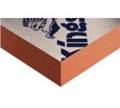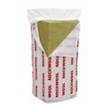Cold Pitched Roof Insulation - Pitched Roof Insulation Part 2

by Mark Row
Insulation methods and techniques: Cold pitched roof insulation
 Cold Pitched roof insulation is one of two basic types of pitched roof insulation, known as the warm and cold roof systems. Both of them include the use of different insulation methods and materials and overall insulation installation process, so we herewith offer some basics on first cold pitched roof insulation.
Cold Pitched roof insulation is one of two basic types of pitched roof insulation, known as the warm and cold roof systems. Both of them include the use of different insulation methods and materials and overall insulation installation process, so we herewith offer some basics on first cold pitched roof insulation.
Insulation Tips
In cold pitch roof insulation is placed at the ceiling level, where proper ventilation is secured by eaves ventilators or gaps between the tiles (or any other roof covering). Namely, proper ventilation is very important since it reduces the possibility of rot occurring within roof timbers and allows any insulation condensation to evaporate. On the other hand, this type of insulation also influences the potential use of roof space, since it reduces it.
 There are some things that you should pay attention to before and when installing cold pitched roof insulation. Firstly, this process may include removing the existing insulation, especially in overall poorly insulated buildings. Always check the type of insulation material used, since some insulation materials may require special attention when removed, as being potentially dangerous for your health, so protective equipment should always be used. Make sure to minimize the chance of thermal bridges that could appear, especially if the whole area has not be completely insulated or there are major depth differences in the insulation material used. Also, avoid any gaps in insulation since these can lead to thermal bridges and cause draft, thus influencing and reducing thermal performance of the insulation. It could be beneficial to use two layers of insulation – one between the joist and another one over the joists. Always insulate plumbing and water tanks, since these areas are subject to condensation and cold pitched roof insulation affects the potential freezing. Make sure to seal all cracks and joints, especially around cables and pipes, where there is an increased risk of condensation, as well as potential risk of cold air traveling through the gaps from the roof space to the rest of your home. Take care of the ventilation that is, in cold pitched roof insulation, provided through eaves, vents roof coverings or ridges, since poor ventilation can increase the condensation problem. Finally, make sure that your insulation is in accordance with applicable regulation, especially when it comes to its U value, that must be set at a certain level when insulating a ceiling.
There are some things that you should pay attention to before and when installing cold pitched roof insulation. Firstly, this process may include removing the existing insulation, especially in overall poorly insulated buildings. Always check the type of insulation material used, since some insulation materials may require special attention when removed, as being potentially dangerous for your health, so protective equipment should always be used. Make sure to minimize the chance of thermal bridges that could appear, especially if the whole area has not be completely insulated or there are major depth differences in the insulation material used. Also, avoid any gaps in insulation since these can lead to thermal bridges and cause draft, thus influencing and reducing thermal performance of the insulation. It could be beneficial to use two layers of insulation – one between the joist and another one over the joists. Always insulate plumbing and water tanks, since these areas are subject to condensation and cold pitched roof insulation affects the potential freezing. Make sure to seal all cracks and joints, especially around cables and pipes, where there is an increased risk of condensation, as well as potential risk of cold air traveling through the gaps from the roof space to the rest of your home. Take care of the ventilation that is, in cold pitched roof insulation, provided through eaves, vents roof coverings or ridges, since poor ventilation can increase the condensation problem. Finally, make sure that your insulation is in accordance with applicable regulation, especially when it comes to its U value, that must be set at a certain level when insulating a ceiling.
Insulation methods
Now, to get to know with some standard cold pitched roof insulation methods. One way is to install the insulation from above, which includes a temporary removal of the roof covering and installing the insulation between the rafters, with air gap between the insulation and roof covering present. When installing insulation this way you have a full access which can provide effective insulation, the ability to repair ceiling from above if needed and the possibility of installing a vapor permeable layer. However, this method always include the removal of the roof covering even if in satisfactory condition and can be quite expensive.
Another way is to push the insulation down from the roof space, which does not include removal of the roof covering and is less costly, but it could also be difficult to put the insulation in place and can potentially block the ventilation.
You could also add insulation by removing the ceiling, that is replacing your existing ceiling with a new insulated one. However, although cost effective, this may require obtaining a permit or a permission prescribed by relevant regulation.
Finally, you can insulate under the ceiling, by applying an insulation board, where there are no work place preparations needed, it does not include the removal of roof covering or the existing ceiling and is thus less expensive, but can cause damage to the ceiling, it is affected by the heights of floors and ceilings and also existing windows and doors and it can also affect the proportion of the space.
Insulation materials
A very important issue to address when choosing the right insulation material for cold pitched roof insulation is the condensation risk. This is why you need to choose materials that are very moisture resistant, that is able to release and absorb moisture. Also choose durable materials which will not suffer degradation in time.
One option is using natural fiber insulation materials which are hygroscopic, non-hazardous and moisture resistant. Insulation London offers you a wide set of mineral wool insulation products, manufactured by Rockwool and Knauf, being the leading manufacturers of insulation products today. Flexible insulation rolls and batts are also applicable, just like semi-rigid and rigid insulation boards, also available right here, all certified, high quality products with great thermal performance.
Kingspan Pitched Roof Board Rockwool Universal Insulation Slab
Feel free to share your opinion and expirience on cold pitched roof insulation in the comments section below. I will be happy to answer all your questions.



































































































































